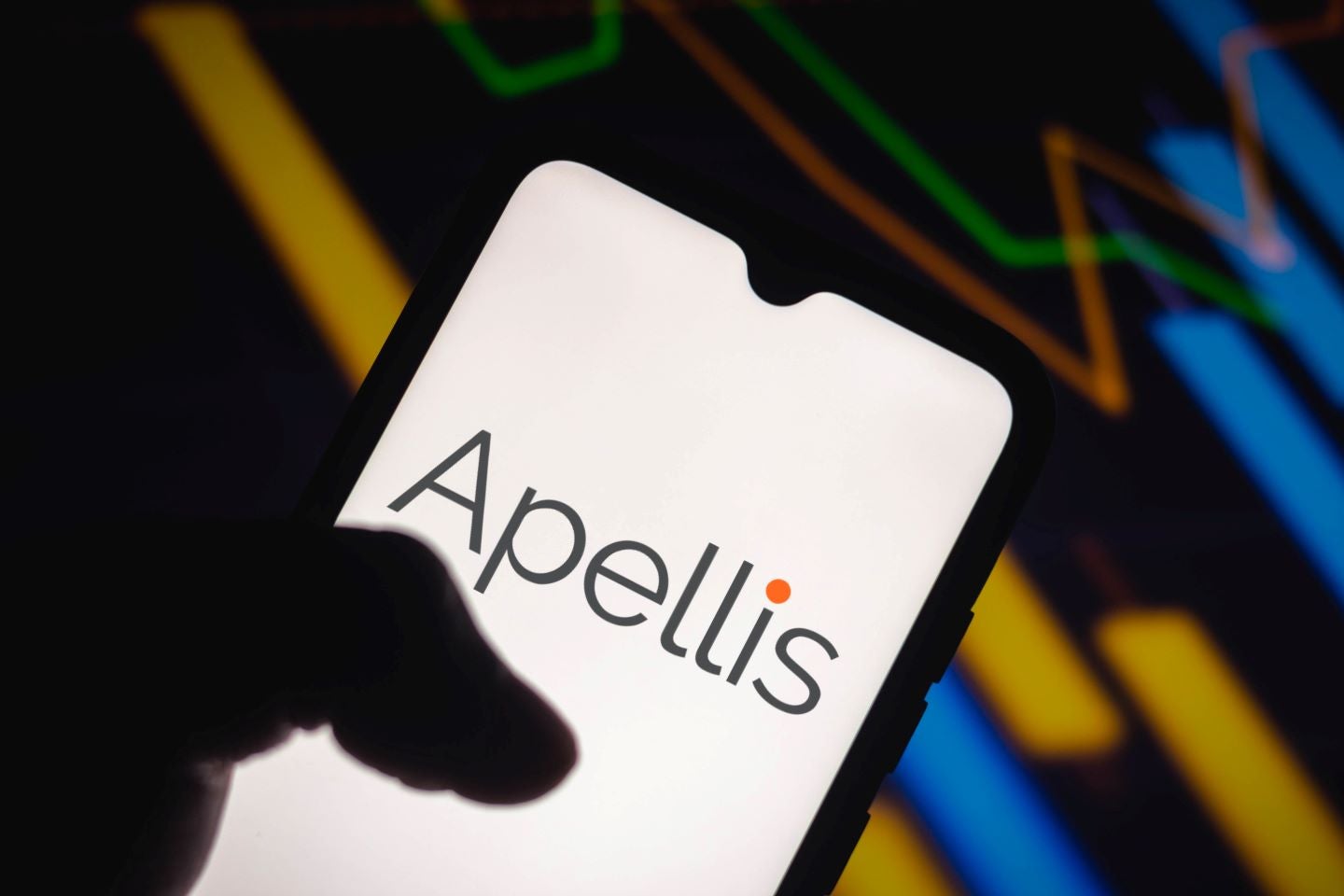At the 127th Annual Meeting of the American Academy of Ophthalmology (AAO) 2023, results were presented from the Phase III GALE (NCT04770545) trial, evaluating Apellis Pharmaceuticals’s Syfovre (pegcetacoplan) for the treatment of geographic atrophy (GA). GALE, an extension study on Syfovre, which followed the 24-month Phase III trials OAKS (NCT03525613) and DERBY (NCT03525600), provided results on the long-term efficacy and safety of Syfovre over the course of 12 months. Syfovre is the first treatment to be approved for GA, a disease that presents as an advanced form of age-related macular degeneration (AMD), and results in the gradual, permanent loss of the retinal pigment epithelium (RPE), photoreceptors (PR), and underlying choriocapillaris.
Syfovre works by targeting complement component 3 (C3), complement component 3b (C3b) and its downstream complement components. The efficacy results within the GALE study showed that over time, there was an increase in treatment effect; within the monthly dosing group, a reduction of up to 35% (p <0.0001) in lesion growth was recorded across the total population of the study (subfoveal and nonsubfoveal) in comparison to the projected sham arm, whereas within the every-other-month dosing group, a reduction of 24% (p <0.0001) in lesion growth was recorded. This gave rise to 1.49mm² and 1.21mm², respectively, of retinal tissue being preserved over the course of 36 months, across the OAKS and DERBY and the GALE clinical trials, in the monthly dosing group and every-other-month dosing group. When looking closer into the GALE nonsubfoveal group, study results showed that within the monthly dosing group, an even larger reduction of up to 42% (p <0.0001) in lesion growth was recorded in comparison to the projected sham, whereas within the every-other-month dosing group, a reduction of 28% (p=0.0002) in lesion growth was recorded. This gave rise to 2.44mm² and 1.94mm², respectively, of retinal tissue being preserved over the course of 36 months, across the OAKS and DERBY and the GALE clinical trials within the nonsubfoveal subgroup, in the monthly and every-other-month dosing groups. Furthermore, the GALE trial studied the correlation between Syfovre and the central 4 and 16 macular loci, which are associated with greater vision loss over two years. Results showed that the risk of progression of these loci to absolute scotoma was reduced by Syfovre.
With regards to the safety profile of Syfovre, results of GALE were consistent with those of preceding trials, OAKS and DERBY; in subjects who were in the monthly dosing group in both OAKS and DERBY and GALE, there were two instances of serious adverse events (AEs), one instance of ischemic optic neuropathy, and one instance of vitritis. Across the OAKS, DERBY, and GALE trials, over the course of 36 months, per injection, there was a rate of 0.03% of infectious endophthalmitis, 0.05% of ischemic optic neuropathy, and 0.36% of intraocular inflammation. There were no events of vasculitis and occlusive and non-occlusive retinitis in the studies.
Charles Wykoff, MD, PhD, Director of Research Retina Consultants of Texas, Chairman of Research Retina Consultants of America, who presented some of the data on the GALE trial, noted that “the biggest challenge to application in the clinical realm is that efficacy is modest with both of these medications and then safety is a major issue, especially when efficacy is very modest”.
In his presentation, Wykoff explained that if caught early, exudative AMD (eAMD) development is a safety issue that is manageable. Over the course of the GALE study, from Months 24 to 36, in the monthly dosing group 7.1% of subjects developed eAMD, whereas in the every-other-month dosing group, 2.3% of subjects developed eAMD, highlighting that the development of new-onset eAMD occurs in a dose-dependent manner. However, with timely treatment, patients responded well to anti-VEGF treatment.
Wykoff elaborated that “both medications [Syfovre and Izervay] are valuable, but they are controversial…we certainly need better products that are more effective, safer, and have a longer duration of action.”

US Tariffs are shifting - will you react or anticipate?
Don’t let policy changes catch you off guard. Stay proactive with real-time data and expert analysis.
By GlobalDataKey opinion leaders (KOLs) interviewed by GlobalData have stated they think that the arrival of Syfovre and IVERIC bio’s Izervay (avacincaptad pegol; ACP), which targets complement 5 (C5), to the GA market is both exciting and interesting, and KOLs are curious to know how people will choose between both GA therapies.
According to GlobalData’s Pharma Intelligence Center, there are three Phase III GA candidates worldwide, gildeuretinol acetate, tinlarebant, and AVD-104, the latter of which is also in development for dry macular degeneration. There are nine Phase II GA candidates worldwide, notably elamipretide hydrochloride, ANX-007, and JNJ-1887. There are four Phase I GA candidates worldwide, including ONL-1240.





